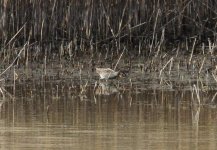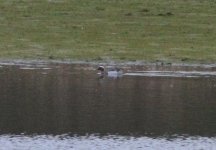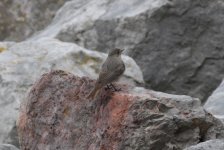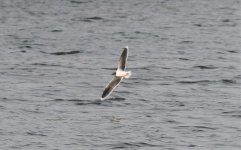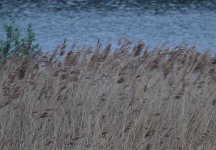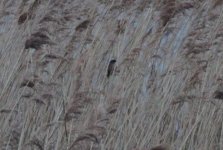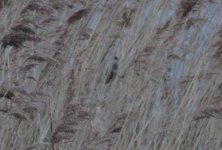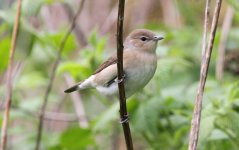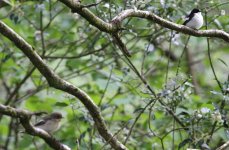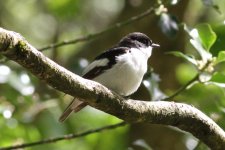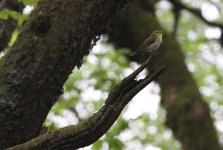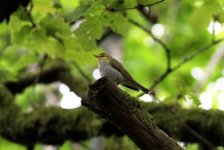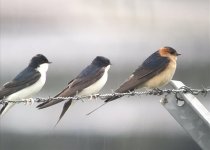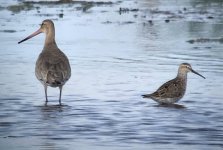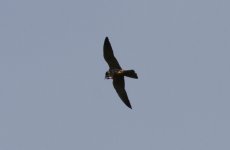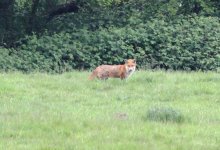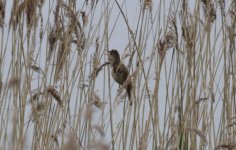Jonny721
Well-known member
Wednesday 10th April - Rutland Water
A week of Great Crested Newt surveys may mean a lot of late nights and early mornings, but it also means I get a bit more free time during the day to get out and about birding. This afternoon I headed across to Rutland Water for a wander around the nature reserve with two targets in mind, the recently returned Ospreys and the wintering drake American Wigeon.
Despite a chilly wind it was a lovely sunny day and a few butterflies were on the wing as I walked up to the hides overlooking Lagoon 4, including my first Orange-tips and Green-veined White of the year. On the lagoon it soon became clear that my continuing lack of scope would be a hindrance in searching for the Wigeon, as there were several small groups scattered around, some rather distant. Fortunately my other target was much more co-operative; a panic amongst the gulls signalled the arrival of an Osprey which gave spectacular views over the lagoon before settling on the nesting platform infront of Dunlin Hide. It wasn't the only bird of prey on show either, with a pair each of Red Kite and Peregrine also seen. Turning my attention back to the wildfowl I eventually managed to locate the drake American Wigeon on one of the islands on the lagoon, a distant view but not too bad through the camera! A final highlight came in the form of an adult Little Gull that dropped in to rest infront of Sandpiper Hide, one of several seen on the reserve today.
183. Osprey
184. American Wigeon
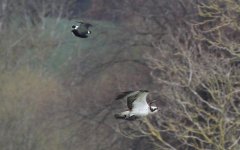
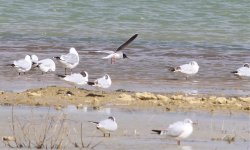
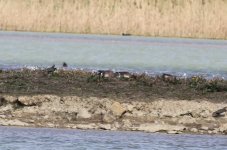
A week of Great Crested Newt surveys may mean a lot of late nights and early mornings, but it also means I get a bit more free time during the day to get out and about birding. This afternoon I headed across to Rutland Water for a wander around the nature reserve with two targets in mind, the recently returned Ospreys and the wintering drake American Wigeon.
Despite a chilly wind it was a lovely sunny day and a few butterflies were on the wing as I walked up to the hides overlooking Lagoon 4, including my first Orange-tips and Green-veined White of the year. On the lagoon it soon became clear that my continuing lack of scope would be a hindrance in searching for the Wigeon, as there were several small groups scattered around, some rather distant. Fortunately my other target was much more co-operative; a panic amongst the gulls signalled the arrival of an Osprey which gave spectacular views over the lagoon before settling on the nesting platform infront of Dunlin Hide. It wasn't the only bird of prey on show either, with a pair each of Red Kite and Peregrine also seen. Turning my attention back to the wildfowl I eventually managed to locate the drake American Wigeon on one of the islands on the lagoon, a distant view but not too bad through the camera! A final highlight came in the form of an adult Little Gull that dropped in to rest infront of Sandpiper Hide, one of several seen on the reserve today.
183. Osprey
184. American Wigeon







